Abstract
Population movement has become an important factor in recent economic trends. The increase in net migration has been particularly notable in high-income countries. The latest projections for 2050 put net migration from high-income countries at 2.54 million. This trend is consistent with immigration trends over the past few decades and is primarily driven by the following factors: First, high-income countries are pursuing policies to accept immigrants to fill labor shortages and skills gaps. There is also an increase in immigration as people seek economic opportunity, helping high-income countries attract a diverse talent pool and boosting economic growth. Furthermore, the scale of immigration depends heavily on each country’s economic stability and policy changes. High-income countries value immigrants not only as a source of labour but also as a source of cultural diversity. Overall, increased immigration to high-income countries has both economic benefits and social impacts and is likely to play an important role in the future international economy.
Net immigration
Looking at data from 1960 to 2050, we see a notable change in the distribution of net migration. Net migration, particularly in high-income countries, is expected to peak in 2022, reaching 8.61 million people. This figure is the largest ever net migration in the world, demonstrating the scale of immigration in high-income countries. Over the past few decades, high-income countries have strengthened immigration policies to fill labour shortages and boost economic growth. However, between the 2022 peak and now, the number of migrants from high-income countries has fallen by 29.5%, reflecting fluctuating economic conditions and migration policies. The decline is due to stricter immigration policies and restrictions on immigrant acceptance. Moreover, emerging and middle-income countries are emerging as destinations for migrants, reducing pressure on high-income countries to accept immigrants. Overall, net immigration in high-income countries has declined since its peak, but while immigration remains key to economic growth, changes in immigration policies and international trends are having a major impact on the numbers.
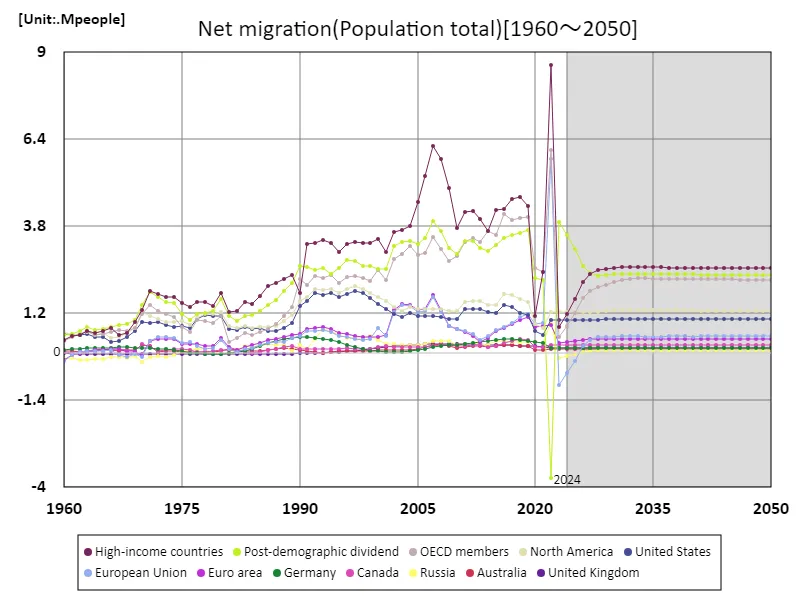

The maximum is 8.61Mpeople[2022] of High-income countries, and the current value is about 29.5%
Net immigration (worldwide)
Considering data from 1960 to 2050, net immigration in the United States has undergone notable changes. In 1997, net immigration to the United States peaked at 1.87 million, one of the highest in the world. During this period, the United States focused on easing immigration restrictions and promoting economic growth, attracting many immigrants. Subsequent data, however, shows that net immigration to the United States is now down to 55% of its peak. This decline is due to tougher immigration policies and changing social and political responses to immigration. Economic factors and fluctuations in the labor market also play a role. In recent years, the United States has tended to reduce its immigration capacity and prioritize certain skills and occupations. In addition, the relative number of immigrants in the United States has declined as global immigration flows have diversified and people have started moving to other countries. Overall, changes in net immigration in the United States reflect international economic conditions and domestic policy changes, and adjustments in immigration policy will continue to have a significant impact on those numbers.
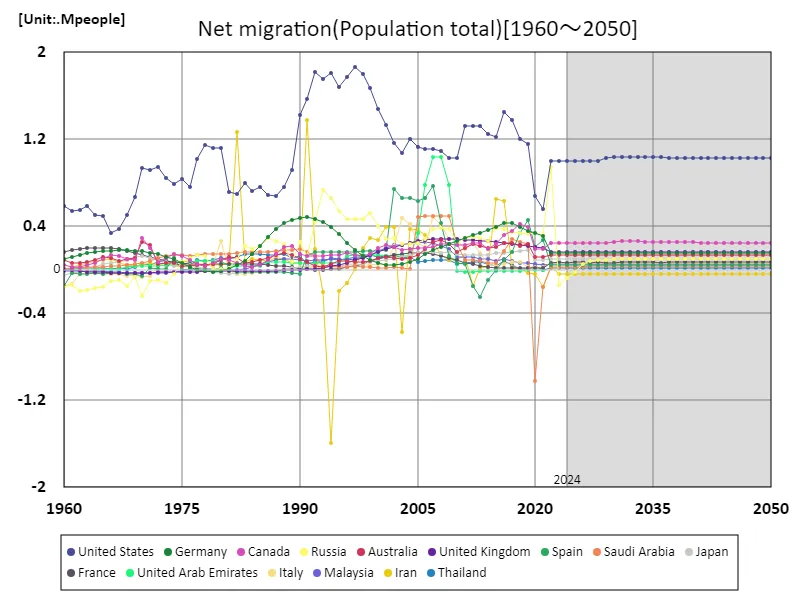

The maximum is 1.87Mpeople[1997] of United States, and the current value is about 55%
Net immigration (worldwide, latest year)
Based on data for 2050, the United States is expected to have the largest net immigration in the world, reaching 1.03 million. In comparison, the global average net migration figure is 198 people, totalling 38,900. These figures indicate an important change in immigration trends compared to historical trends. Over the past few decades, high-income countries have increasingly welcomed immigrants to fill labour shortages and skills gaps. The United States in particular stands out for the scale of its immigration and its influence, and has played a central role in global immigration flows. However, while the United States is seeing its highest net immigration numbers, other high- and middle-income countries are also accepting more immigrants, so overall immigration numbers are more diversified. Also, the small average net immigration rate of 198 people suggests that other countries are more cautious about accepting immigrants than the United States. This is thought to be due to differences in each country’s immigration policies and economic backgrounds. Overall, the United States’ high net immigration reflects both economic opportunity and the influence of immigration policies, and it is expected to remain a major player in global immigration trends. As other countries’ admissions policies also evolve, the distribution of immigrants will continue to diversify.
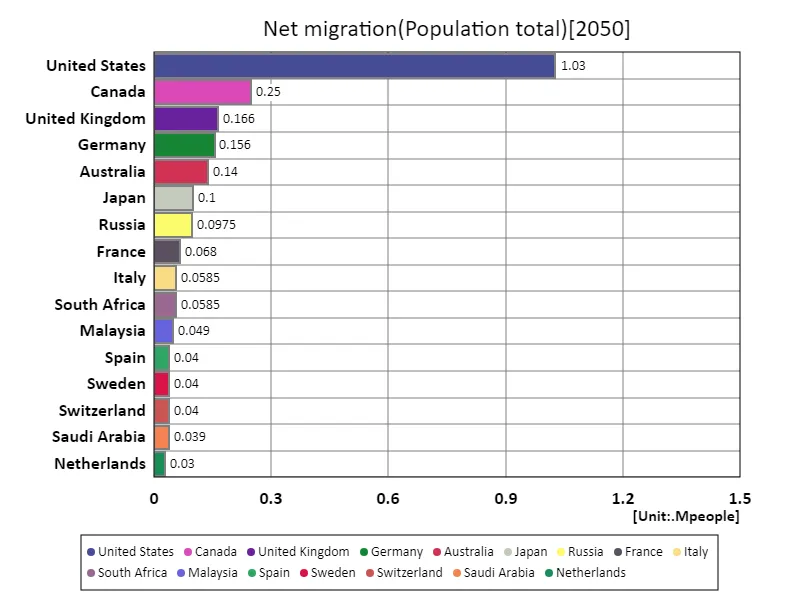

The maximum is 1.03Mpeople of United States, the average is 15people, and the total is 2.93kpeople
Net migration (region, latest year)
According to data for 2050, the greatest number of net immigrants worldwide is expected to occur in North America, reaching 1.28 million. In contrast, the overall average net migration figure was -44,500, for a total of -667,000. The data indicates a major shift in migration trends. Looking at trends over the past few decades, immigration has been concentrated primarily in high-income countries, particularly in North America and Western Europe. North America has always stood out for its size and the United States and Canada in particular have been major destinations for immigrants. However, it is noteworthy that while North America will have the largest net immigration in 2050, the overall total will be negative. This negative overall total could reflect several factors. This could be due to an imbalance between immigrant-receiving and immigrant-sending countries, or the impact of changes in immigration policy. Global economic fluctuations and political instability may also affect migration flows. Overall, the notable increase in immigration in North America, combined with declines in net migration in other regions and negative global migration figures, indicates that immigration flows are becoming increasingly complex and diverse. Immigration policies and international economic and political situations will have a major impact on future immigration trends.
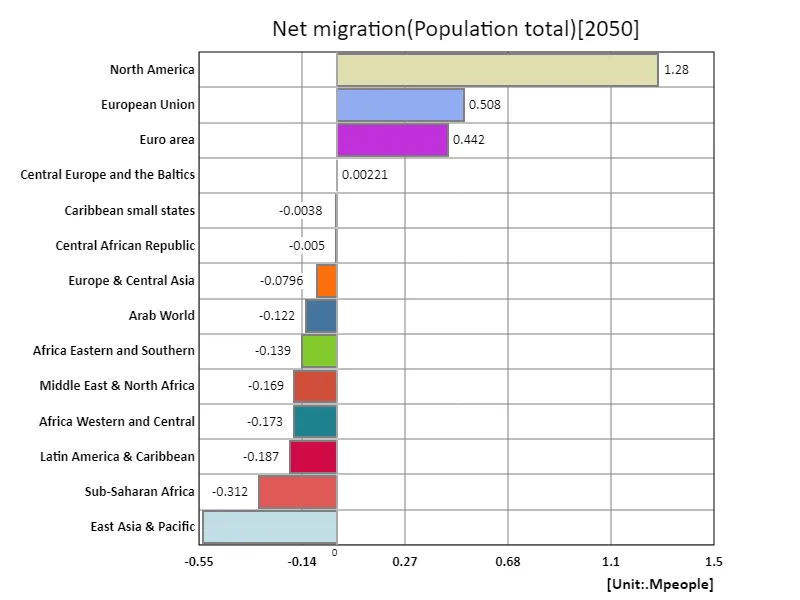

The maximum is 1.28Mpeople of North America, the average is -44.5kpeople, and the total is -667kpeople
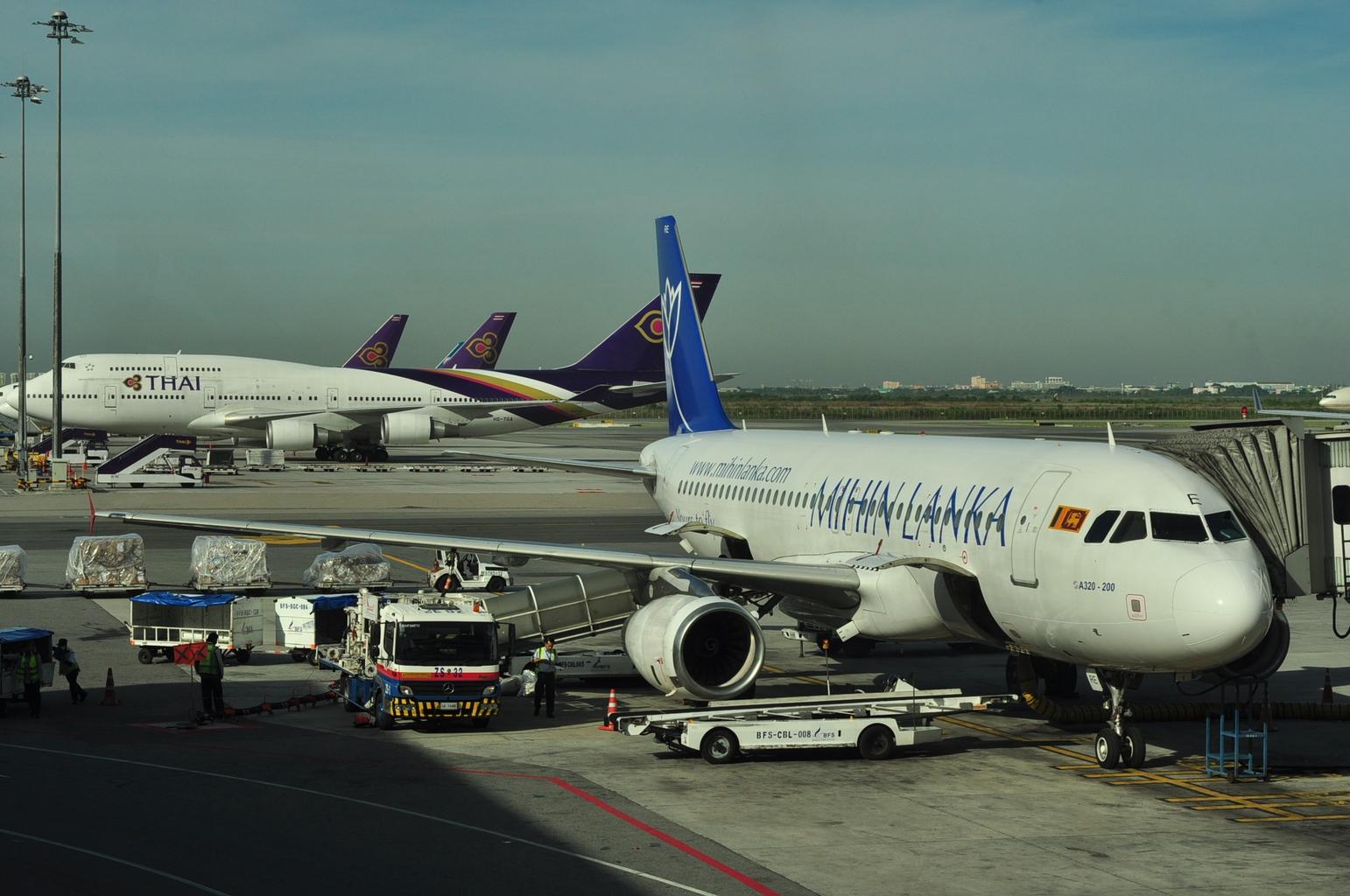


Comments